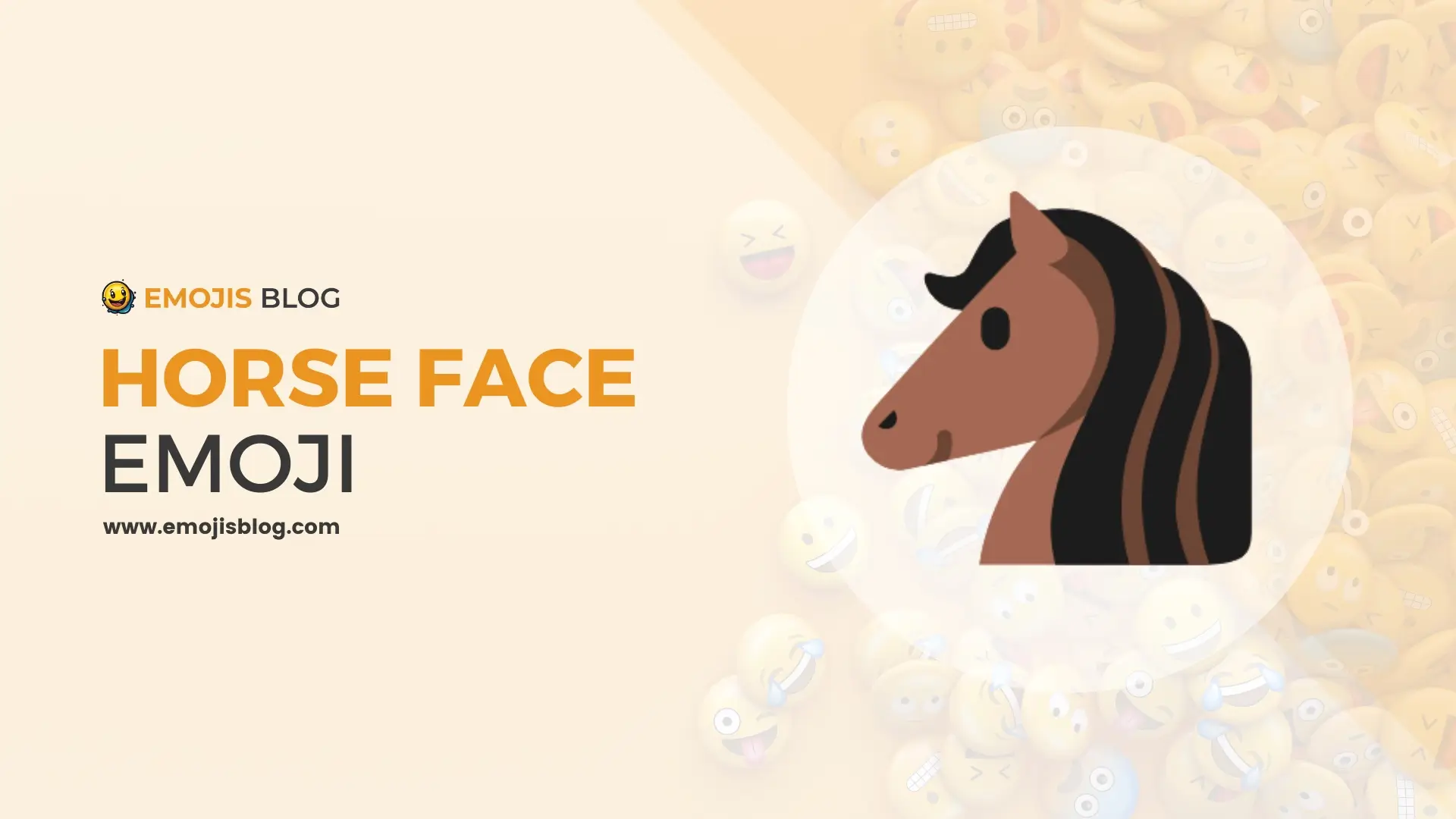What Does The Horse Face Emoji 🐴 Mean?
🐴
Horse Face Emoji 🐴 Meaning
The horse face emoji 🐴 is a versatile symbol that represents the head of a horse, often used in digital communication to convey literal references to horses and equestrian activities, or to symbolize strength, endurance, and resilience. It can also add a playful or humorous touch to messages and is sometimes used in idiomatic expressions involving horses. The emoji’s design, which may slightly vary across platforms, maintains recognizable features such as the mane, eyes, nostrils, and mouth, making it a familiar and widely understood icon.
Technical Information
Here is the technical information of the horse face emoji 🐴 in table format:
| Attribute | Description |
|---|---|
| Unicode | U+1F434 |
| Name | Horse Face |
| Category | Animals & Nature |
| Subcategory | Animal Mammal |
| Introduced in | Unicode 6.0 (2010), Emoji 1.0 (2015) |
| Codepoint | 1F434 |
| Shortcode | :horse: |
| Hex Code | 🐴 |
| Decimal Code | 🐴 |
| Platforms | Apple, Google, Microsoft, Samsung, Twitter, Facebook, etc. |
| Appearance | Varies slightly across platforms, typically featuring a brown or tan horse head in profile with a visible mane, eyes, nostrils, and mouth |
| Related Emojis | 🐎 (Horse), 🦄 (Unicorn), 🐂 (Ox), 🐐 (Goat) |
| Modifiers | No skin tone or gender modifiers |
Understanding the Horse Face Emoji 🐴: Meaning and Usage
The horse face emoji 🐴 is a versatile and commonly used symbol in digital communication. This emoji, featuring a horse’s head with its distinct features, serves various purposes across different contexts. To fully understand the meaning and usage of the horse face emoji, it’s essential to delve into its origins, interpretations, and examples of its application in everyday messaging.
Origins and Design of the Horse Face Emoji
The horse face emoji was introduced as part of Unicode 6.0 in 2010 and added to Emoji 1.0 in 2015. It depicts a horse’s head in profile, typically facing left, with a mane, eyes, nostrils, and mouth clearly visible. The design might vary slightly across different platforms and devices, but the essential elements remain consistent, making it easily recognizable.
Common Meanings and Interpretations
The horse face emoji carries several meanings, often depending on the context in which it is used. Here are some of the most common interpretations:
1. Literal Representation of a Horse
The most straightforward use of the horse face emoji is to represent the animal itself. This can be in conversations about horses, horseback riding, or any related activities. It’s also commonly used by horse enthusiasts and equestrians to express their passion for the animal.
2. Strength and Endurance
Horses are often symbols of strength, power, and endurance. The horse face emoji can be used to convey these attributes. For example, it might be included in a message to compliment someone’s resilience or hard work.
3. Playfulness and Fun
In a more playful context, the horse face emoji can be used to inject a sense of fun or humor into a conversation. Its cartoonish appearance can help lighten the mood and add a touch of whimsy to messages.
4. Idiomatic Expressions
The horse face emoji can also be used in relation to idiomatic expressions involving horses. Phrases like “hold your horses” (meaning to wait or be patient) or “straight from the horse’s mouth” (referring to information from a reliable source) are examples where this emoji might be appropriately used.
Usage Examples in Digital Communication
To further illustrate the versatility of the horse face emoji, here are a few examples of its usage in different scenarios:
- In a conversation about a weekend activity: “I went horseback riding for the first time today! 🐴 It was amazing!”
- Complimenting someone’s perseverance: “You’ve been working so hard on this project. Keep up the great work! 🐴”
- Adding humor to a chat: “Just horsing around this weekend! 🐴😂”
- Referencing an idiom: “Got the info straight from the horse’s mouth 🐴, so you can trust it!”
Platform Variations
While the horse face emoji maintains a consistent overall design, slight variations exist across different platforms, including Apple, Google, Microsoft, and Samsung. These differences can include variations in color, shading, and the level of detail, but they all preserve the fundamental characteristics that make the emoji identifiable.
Cultural and Regional Significance
In some cultures and regions, horses hold significant symbolic value. For example, in Chinese culture, the horse is one of the twelve zodiac animals and is associated with attributes like speed, perseverance, and intelligence. Using the horse face emoji in such contexts can carry additional layers of meaning, reflecting cultural appreciation and symbolism.
Conclusion
The horse face emoji 🐴 is a multifaceted symbol that can convey various meanings, from literal references to horses to more abstract concepts like strength and playfulness. Its usage is widespread across different digital communication platforms, and its interpretations can vary based on context, cultural significance, and personal expression. Understanding the different ways this emoji can be used enhances our ability to communicate more effectively and creatively in the digital age.

